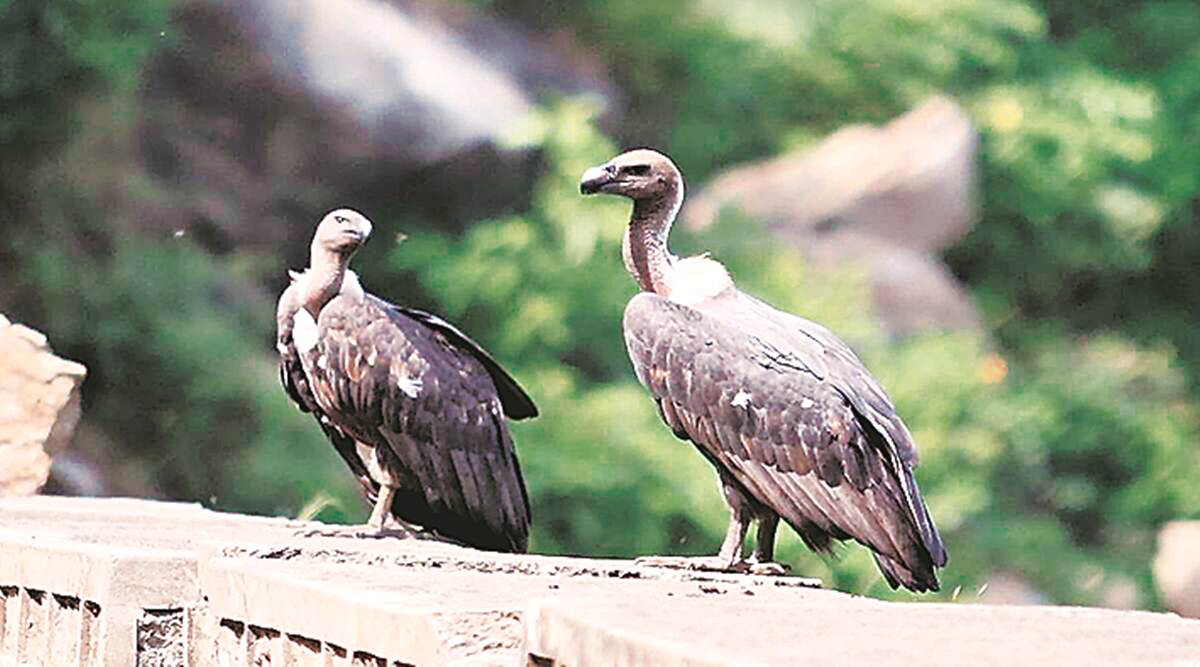 Crisis: A massive dip in vulture populations came into limelight in the mid-90s, and in 2004 the cause of the crash was established as diclofenac, a veterinary nonsteroidal anti-inflammatory drug.
Crisis: A massive dip in vulture populations came into limelight in the mid-90s, and in 2004 the cause of the crash was established as diclofenac, a veterinary nonsteroidal anti-inflammatory drug. Union Minister for Environment, Forests and Climate Change Prakash Javadekar Monday launched a Vulture Action Plan 2020-25 for the conservation of vultures in the country.
Vulture numbers saw a steep slide — as much as 90 per cent in some species — in India since the 1990s in one of the most drastic declines in bird populations in the world. While the ministry has been carrying out a conservation project for vultures since 2006, the plan is to now extend the project to 2025 to not just halt the decline but to actively increase the vulture numbers in India.
There are nine recorded species of vultures in India — the Oriental white-backed, long-billed, slender-billed, Himalayan, red-headed, Egyptian, bearded, cinereous and the Eurasian Griffon.
Between the 1990s and 2007, numbers of three presently critically-endangered species – the Oriental white-backed, long-billed and slender-billed vultures — crashed massively with 99 per cent of the species having been wiped out. The number of red-headed vultures, also critically-endangered now, declined by 91% while the Egyptian vultures by 80%.
The Egyptian vulture is listed as ‘endangered’ while the Himalayan, bearded and cinereous vultures are ‘near threatened’.
The crash in vulture populations came into limelight in the mid-90s, and in 2004 the cause of the crash was established as diclofenac — a veterinary nonsteroidal anti-inflammatory drug (NSAID) used to treat pain and inflammatory diseases such as gout — in carcasses that vultures would feed off.
“Just 0.4-0.7 per cent of animal carcasses contaminated with diclofenac was sufficient to decimate 99 per cent of vulture populations. But due to dedicated conservation efforts, the vulture population is stabilising,” Javadekar said, adding that the ministry has now come out with a holistic approach to vulture conservation.
The MoEFCC released the Action Plan for Vulture Conservation 2006 with the DCGI banning the veterinary use of diclofenac in the same year and the decline of the vulture population being arrested by 2011.
The Central Zoo Authority (CZA) and Bombay Natural History Society (BNHS) also established the Vulture Conservation Breeding Programme, which has been successful and had three critically-endangered species bred in captivity for the first time. Eight centres have been established and, so far, 396 vultures of the three species have successfully fledged.

The ministry has now also launched conservation plans for the red-headed and Egyptian vultures, with breeding programmes for both.
The Vulture Safe Zone programme is being implemented at eight different places in the country where there were extant populations of vultures, including two in Uttar Pradesh.
Attempts are made to secure the population of vulture by ensuring the minimum use of Diclofenac and an area is declared a Vulture Safe Zone only when no toxic drugs are found in undercover pharmacy and cattle carcass surveys, for two consecutive years, and the vulture populations are stable and not declining.
The action plan aims to carry forth what has already been set in motion by ensuring that sale of veterinary NSAIDs is regulated and livestock are treated only by qualified veterinarians.
The Ministry also plans on carrying out safety testing of available NSAIDs on vultures and to develop new ones which do not affect vultures.
Additional Conservation Breeding Centres are also being planned across the country, along with Vulture Conservation Centres with samples and information collected from the wild analysed and stored at these centres — one each in Uttar Pradesh, Tripura, Maharashtra, Karnataka and Tamil Nadu.
Four rescue centres have been proposed for different geographical areas like Pinjore in the north, Bhopal in ventral India, Guwahati in Northeast and Hyderabad in South India.